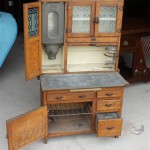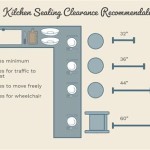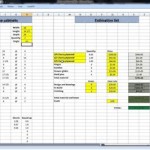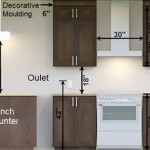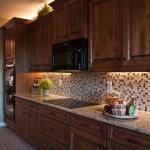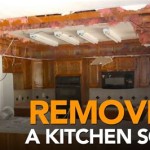Kitchen Cabinet Construction: A Comprehensive Overview
Kitchen cabinets are a foundational element in any kitchen design, providing storage, defining the aesthetic, and impacting the overall functionality of the space. Understanding the intricacies of kitchen cabinet construction is crucial for informed decision-making, whether undertaking a renovation, building a new home, or simply seeking to upgrade existing cabinetry. This article provides a comprehensive overview of the key aspects involved in kitchen cabinet construction, encompassing materials, construction types, styles, and installation considerations.
Materials Used in Kitchen Cabinet Construction
The selection of materials significantly influences the durability, appearance, and cost of kitchen cabinets. Common materials include solid wood, plywood, particleboard, medium-density fiberboard (MDF), and various combinations thereof. Each material possesses unique characteristics that make it suitable for different applications within cabinet construction.
Solid Wood: Solid wood is prized for its natural beauty, strength, and longevity. Popular choices include maple, oak, cherry, and hickory. Solid wood is typically used for cabinet doors, frames, and decorative elements. However, solid wood is susceptible to expansion and contraction with changes in humidity, which can lead to warping or cracking. Solid wood cabinets are often more expensive compared to cabinets constructed from other materials.
Plywood: Plywood is an engineered wood product composed of multiple layers of wood veneer glued together. It offers excellent strength and stability, resisting warping and cracking better than solid wood. Plywood is commonly used for cabinet boxes (sides, top, bottom, and back) due to its dimensional stability and ability to withstand heavy loads. Different grades of plywood are available, with higher grades exhibiting fewer voids and a smoother surface finish.
Particleboard: Particleboard is manufactured from wood chips and resin compressed into sheets. It is a cost-effective material commonly used for cabinet boxes, particularly in budget-friendly cabinetry. Particleboard is less resistant to moisture than plywood and solid wood, and it can swell or disintegrate if exposed to water. It is generally weaker than plywood and may not be suitable for load-bearing applications.
Medium-Density Fiberboard (MDF): MDF is another engineered wood product made from wood fibers and resin compressed under high pressure. It has a smooth, consistent surface that is ideal for painting and laminating. MDF is commonly used for cabinet doors, drawer fronts, and decorative panels. It is more moisture-resistant than particleboard but less so than plywood or solid wood. MDF is also heavier than particleboard.
Laminates and Thermofoils: Laminates and thermofoils are applied to the surfaces of cabinet boxes and doors to provide a durable, decorative finish. Laminates are typically made of layers of paper impregnated with resin and bonded to a substrate. Thermofoils are vinyl coatings that are heat-sealed to MDF or particleboard. These finishes offer a wide range of colors, patterns, and textures, and they are relatively easy to clean. They are frequently used to create modern, sleek cabinet designs.
Construction Methods: Framed vs. Frameless Cabinets
The method used to construct the cabinet box impacts its appearance, accessibility, and structural integrity. The two primary construction methods are framed and frameless.
Framed Cabinets: Framed cabinets feature a face frame attached to the front of the cabinet box. The face frame provides structural support and a surface for attaching doors and drawer fronts. The frame typically consists of stiles (vertical pieces) and rails (horizontal pieces). Framed cabinets offer a traditional aesthetic, and the face frame can be either visible (full overlay) or partially concealed (partial overlay or inset). The face frame can limit the usable space inside the cabinet by obstructing access to items stored near the edges.
Frameless Cabinets: Frameless cabinets, also known as European-style cabinets, lack a face frame. The doors and drawer fronts attach directly to the cabinet box. This construction method provides a clean, contemporary look and maximizes interior storage space. Frameless cabinets typically use thicker cabinet box materials to provide sufficient structural support. The absence of a face frame allows for easier access to items stored inside the cabinet.
The choice between framed and frameless construction often depends on personal preference and the desired style of the kitchen. Framed cabinets are generally considered more traditional, while frameless cabinets offer a more modern aesthetic.
Cabinet Styles and Door Designs
The style of kitchen cabinets significantly contributes to the overall design of the kitchen. Cabinet styles encompass a wide range of aesthetics, from traditional to contemporary, and are largely defined by the door design.
Traditional Cabinets: Traditional cabinets typically feature raised panel doors, decorative moldings, and ornate hardware. The doors often have intricate detailing and are finished in rich wood tones. Traditional cabinet styles evoke a sense of elegance and formality.
Contemporary Cabinets: Contemporary cabinets are characterized by clean lines, minimalist designs, and a focus on functionality. Slab doors, which are flat and unadorned, are a common feature of contemporary cabinets. Metal hardware and sleek finishes are often used to enhance the modern aesthetic. Contemporary cabinets emphasize simplicity and sophistication.
Transitional Cabinets: Transitional cabinets blend elements of both traditional and contemporary styles. They may feature Shaker-style doors with simple detailing or raised panel doors with clean lines. Transitional cabinets offer a versatile look that can be adapted to various kitchen designs.
Shaker Cabinets: Shaker cabinets are a classic and timeless style characterized by a five-piece door with a recessed center panel. The simple, clean lines of Shaker cabinets make them suitable for a variety of kitchen styles, from traditional to contemporary. Shaker cabinets are often painted in neutral colors or stained to highlight the natural wood grain.
Door Overlay Styles: The overlay style refers to how the cabinet door sits in relation to the cabinet frame or box. Common overlay styles include full overlay, partial overlay, and inset.
Full Overlay: Full overlay doors cover the entire cabinet frame or box, creating a seamless appearance. This style is commonly used in frameless cabinets and offers a modern, streamlined look.
Partial Overlay: Partial overlay doors leave a portion of the cabinet frame visible around the door. This style is often used in framed cabinets and provides a more traditional aesthetic.
Inset: Inset doors fit flush with the cabinet frame, creating a clean, built-in look. Inset cabinets require precise construction and are typically found in high-end kitchens.
Hardware and Accessories
Hardware and accessories play a crucial role in the functionality and aesthetics of kitchen cabinets. Knobs, pulls, hinges, and drawer slides are essential components that affect the ease of use and durability of the cabinetry.
Knobs and Pulls: Knobs and pulls are used to open and close cabinet doors and drawers. They come in a wide variety of styles, materials, and finishes to complement the overall kitchen design. The choice of knobs and pulls can significantly impact the look and feel of the cabinets.
Hinges: Hinges connect cabinet doors to the cabinet frame or box. Different types of hinges are available, including concealed hinges, which are hidden from view, and exposed hinges, which add a decorative element. The quality of the hinges affects the smooth operation and longevity of the cabinet doors.
Drawer Slides: Drawer slides allow drawers to open and close smoothly. Ball-bearing slides are a popular choice for their durability and smooth operation. Soft-close drawer slides prevent drawers from slamming shut, reducing noise and wear and tear.
Accessories: A variety of accessories can be added to kitchen cabinets to enhance their functionality and organization. These include pull-out shelves, spice racks, utensil dividers, and waste containers. Accessories can help maximize storage space and improve the efficiency of the kitchen.
Installation Considerations
Proper installation is essential for ensuring the longevity and functionality of kitchen cabinets. Accurate measurements, level surfaces, and secure fastening are crucial for a successful installation. It is generally recommended to hire a professional installer to ensure that the cabinets are installed correctly.
Planning and Measurement: Accurate measurements are essential for ordering the correct size and number of cabinets. The layout of the kitchen should be carefully planned to ensure that the cabinets fit properly and provide adequate storage space. The location of appliances and utilities should also be considered during the planning process.
Leveling: Ensuring that the floor and walls are level is critical for a successful cabinet installation. Shims can be used to level the cabinets and ensure that they are aligned properly. Leveling is especially important for frameless cabinets, as any unevenness will be more noticeable.
Fastening: Cabinets should be securely fastened to the walls using screws and appropriate anchors. The type of anchor used will depend on the wall construction. It is important to use screws that are long enough to penetrate the wall studs or framing members.
Door and Drawer Adjustment: After the cabinets are installed, the doors and drawers may need to be adjusted to ensure that they open and close properly. Adjusting the hinges and drawer slides can correct any misalignments or gaps. Professional installers possess the knowledge and tools to perform these adjustments accurately.

Kitchen Cabinet Construction Drawings Cabinets Drawing Buy

Guide Kitchen Cabinetry Terms Builders Surplus

Kitchen Cabinets Design Materials Smith
Cabinet Construction Marquis Cabinets

How To Build Cabinets The Complete Guide Houseful Of Handmade

Cabinetry 101 Merit Kitchens Ltd

Diy Cabinet Making Your Guide On How To Build A

Unfinished Kitchen Cabinets And Bathroom Cabinet Construction

Blog Vina

Cabinet Construction La Cabinets Multifamily Solutions Western Usa
Related Posts


